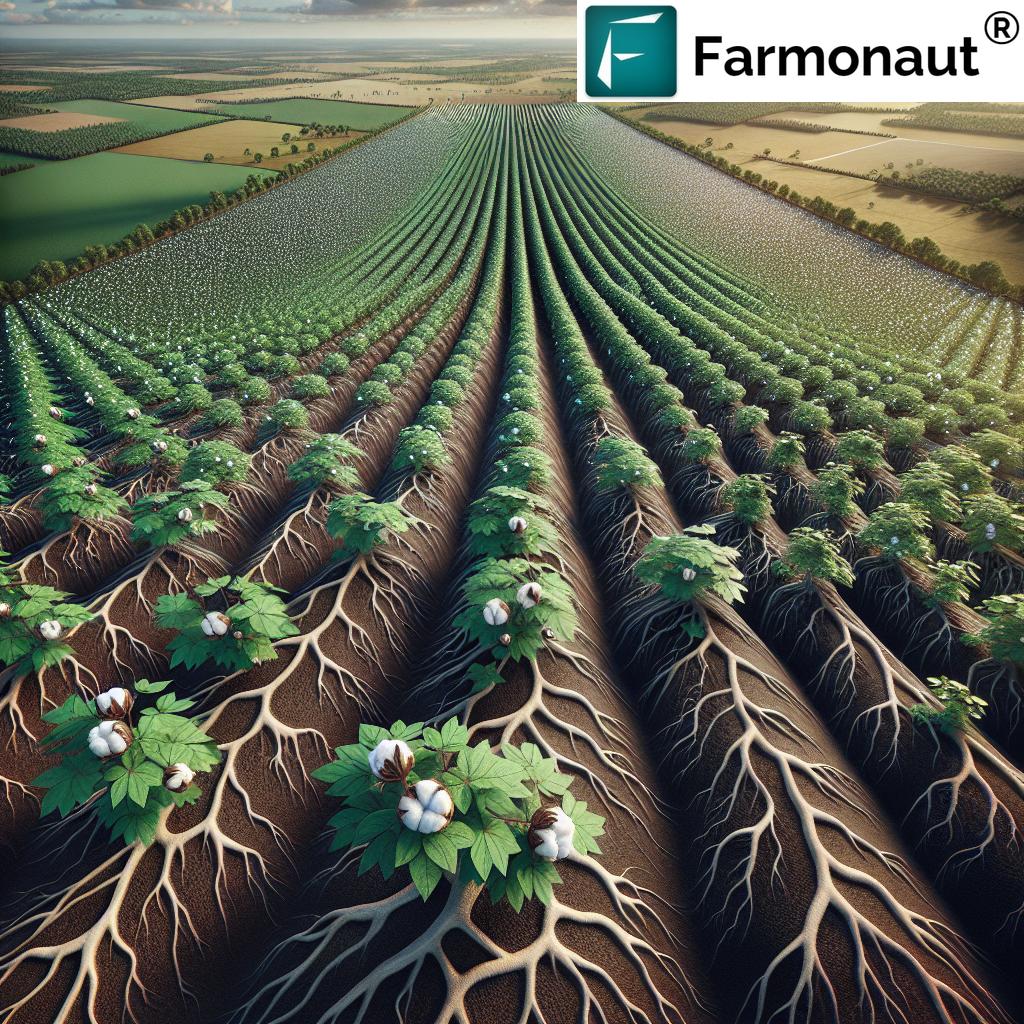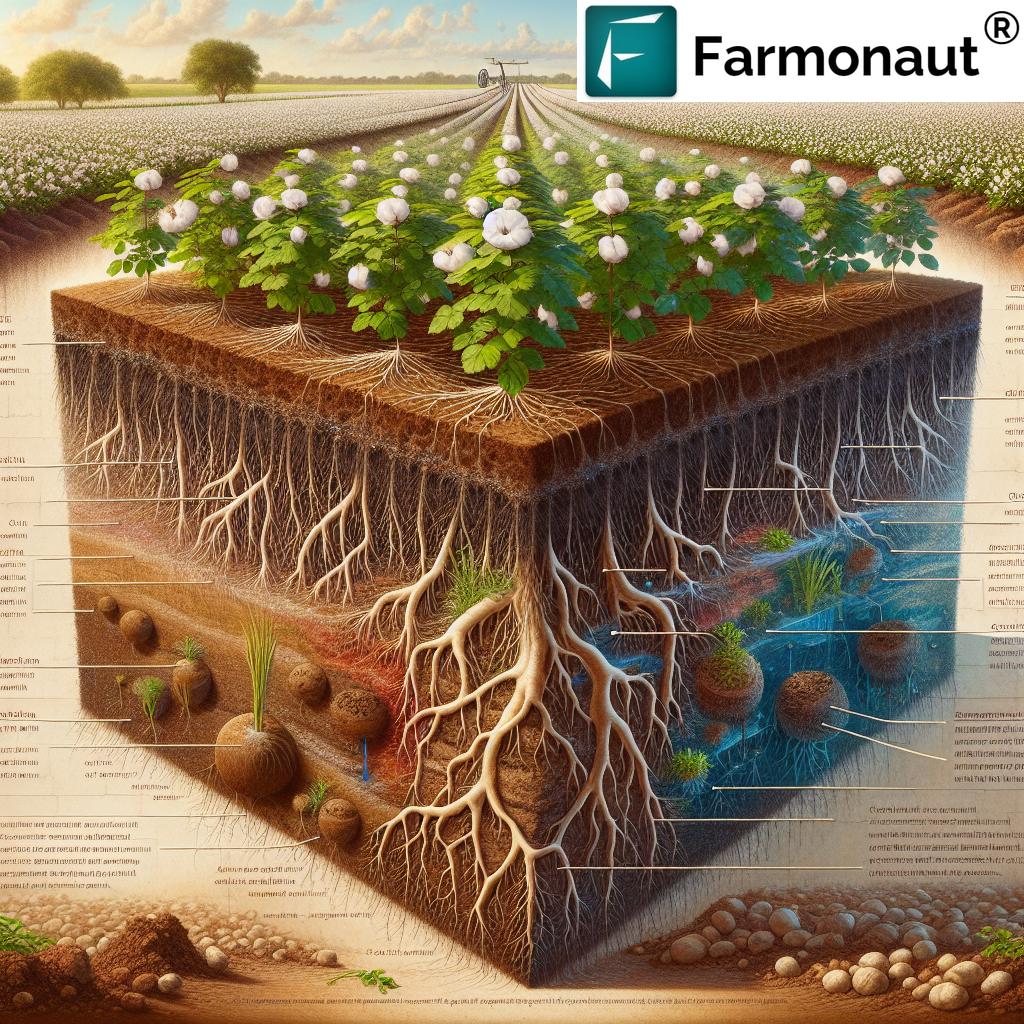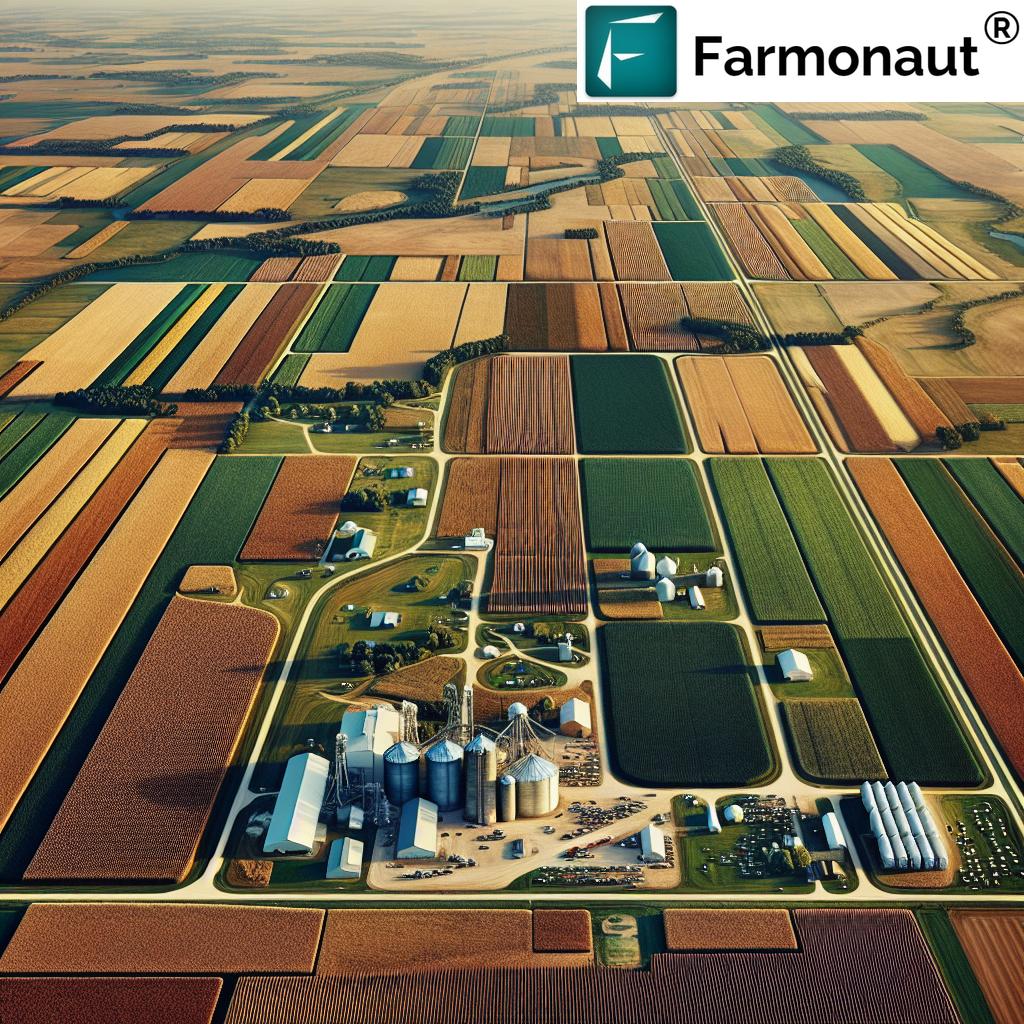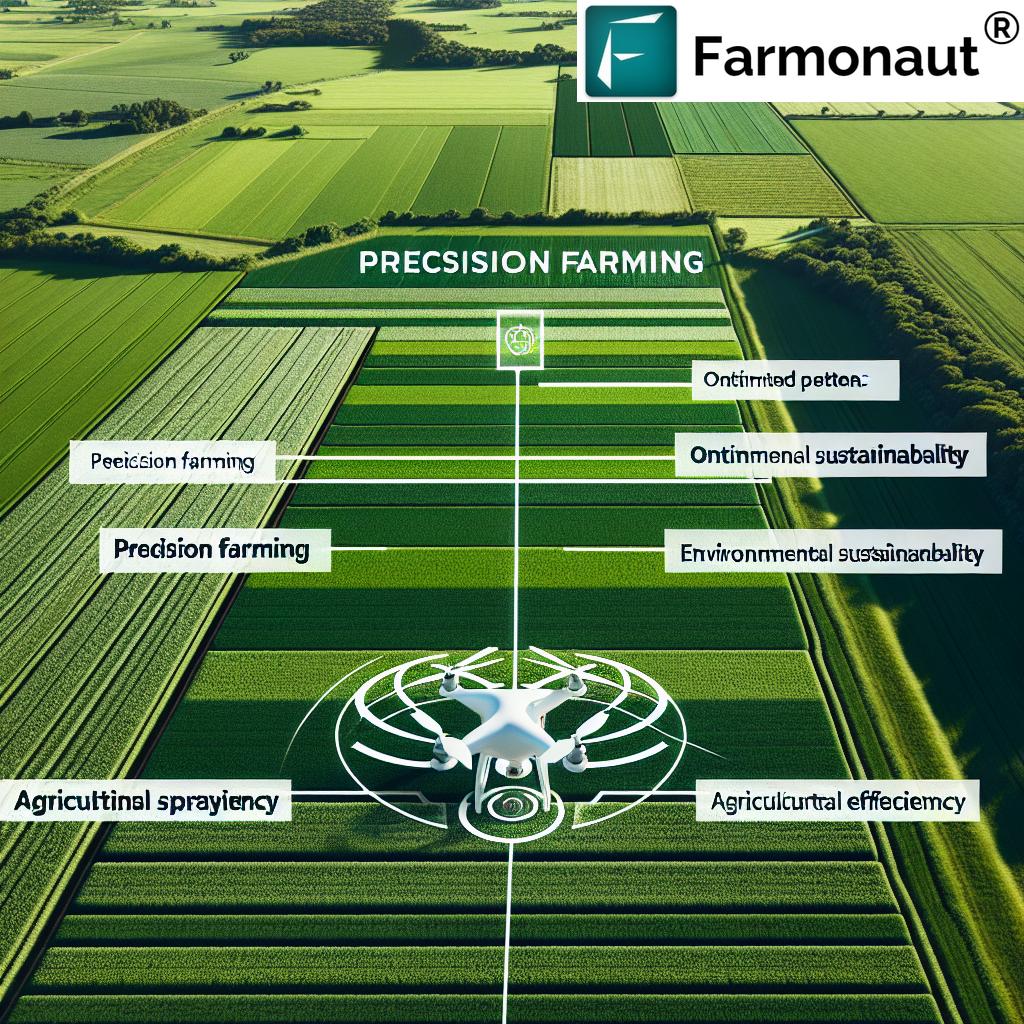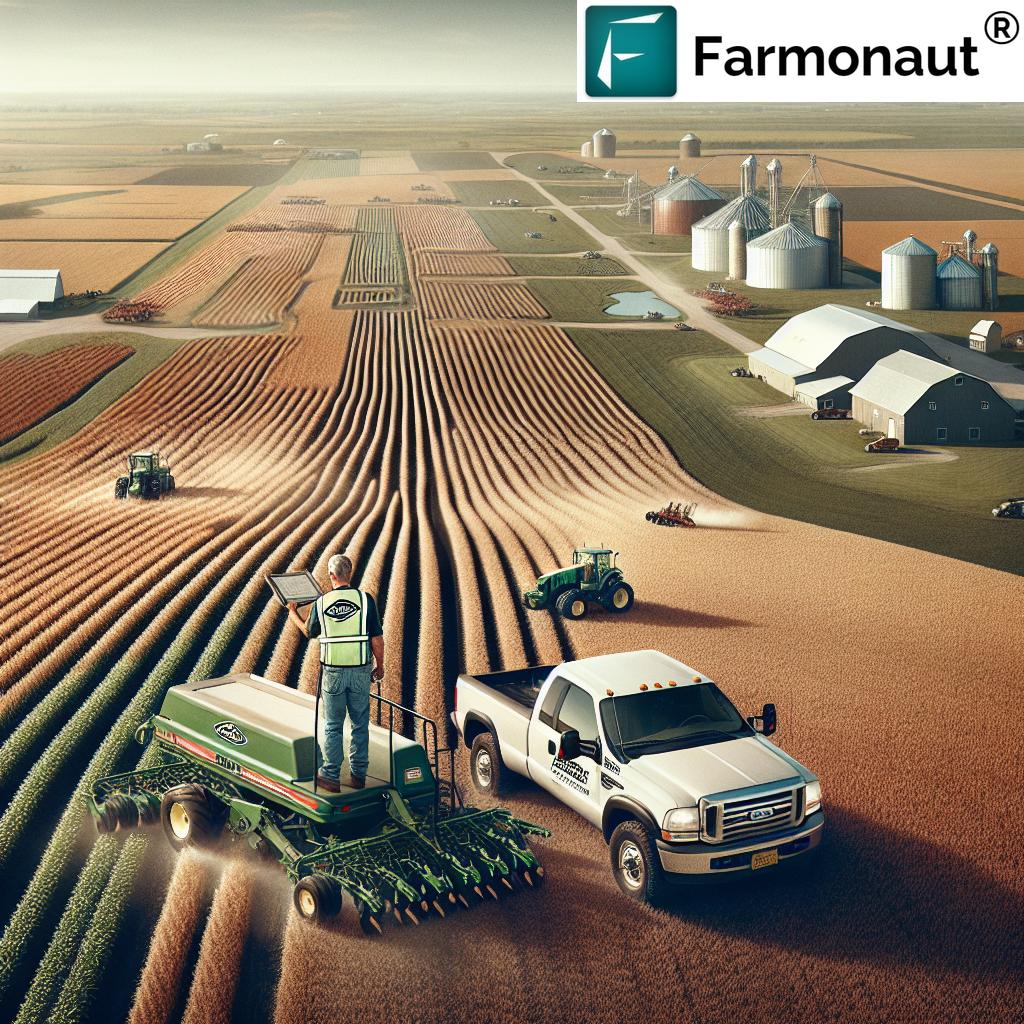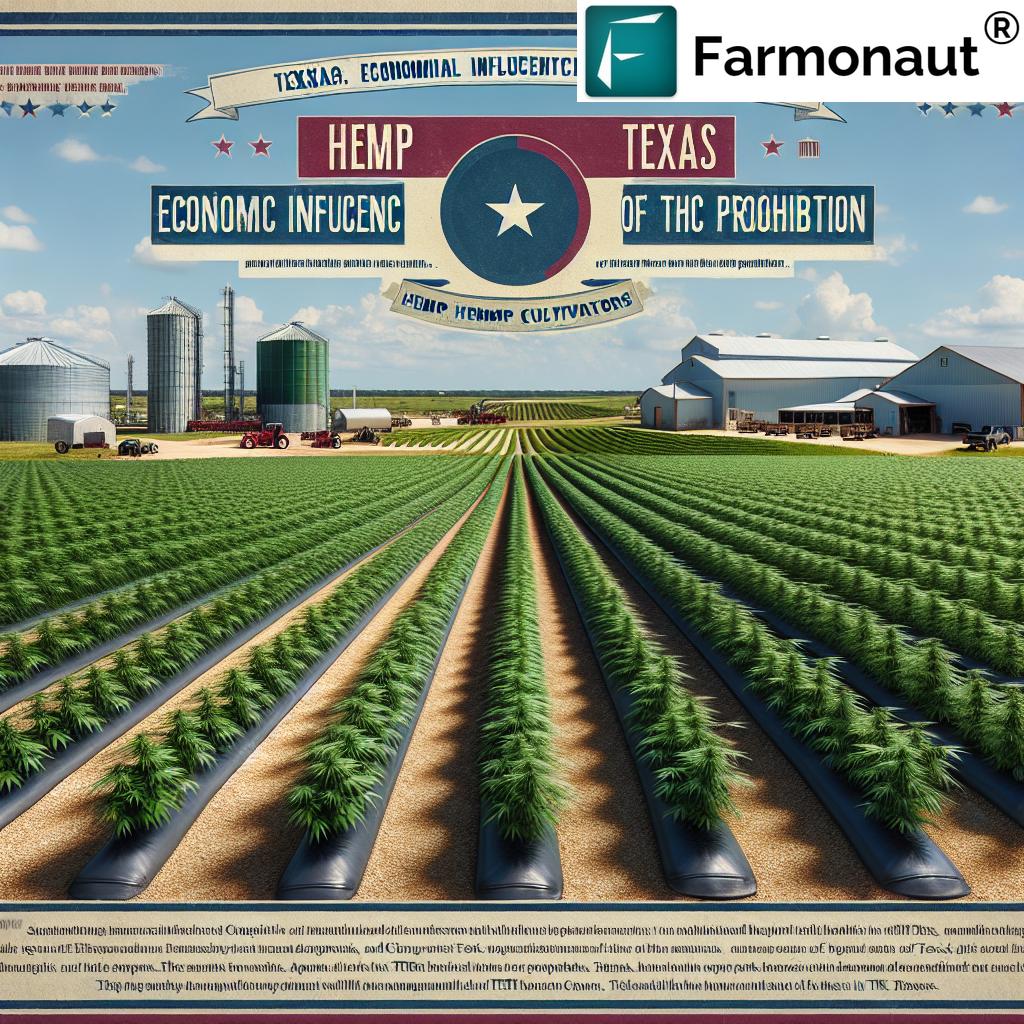Cotton Soil Type Guide: 7 Powerful Tips for Georgia & Texas
“Georgia’s top cotton yields come from soils with pH 6.0–6.5, boosting fiber quality by up to 15%.”
Introduction: Cotton, Soil Types, and Yield Potential
Cotton is not just a crop—it underpins global textile production, supports rural economies, and shapes landscapes across continents. From the plains of Georgia to the expansive fields of Texas, cotton thrives best when cultivated in soils suited to its unique biology. The optimal soil for cotton cultivation directly influences plant growth, fiber development, and the sustainability of farming systems.
To maximize yield and fiber quality, understanding the properties, pH, nutrient levels, and proper cotton soil management practices is critical. This guide explores the best soil types for cotton in Georgia and Texas, essential management tips, common pitfalls, and how advanced technology like Farmonaut can revolutionize your field operations. Whether you’re a grower, agronomist, or enthusiast looking to boost yields, this blog offers in-depth, actionable guidance.
Ideal Soil Types for Cotton Cultivation
Understanding Soil Structure, Texture, and Depth
The soil structure, texture, and depth fundamentally influence cotton growth and productivity. Cotton plants are deep-rooted and flourish in soils with the following characteristics:
- Deep, well-drained profile: Deep soils allow for robust root development, higher moisture retention, and efficient nutrient absorption.
- Balanced texture: Sandy loam and loam soils offer the ideal balance, allowing for both moisture retention and sufficient drainage so plants are neither waterlogged nor moisture-starved.
- High organic matter: Soils with substantial organic residue enhance nutrient availability, fertility, and microbial health—vital for optimal soil for cotton cultivation.
- Stable structure: Well-aggregated soils resist erosion and compaction, which can harm root systems and reduce yield potential.
Major Cotton Soil Types in Georgia and Texas
- Tifton Soils (Georgia): Recognized as Georgia’s state soil, Tifton soils are prevalent in the Southern Coastal Plain. These soils feature dark greyish-brown loamy sand topsoil, underlain by subsoils with ironstone nodules and plinthite. Such soils are agriculturally significant, supporting cotton, peanuts, soybeans, and corn due to their well-drained, fertile nature (source).
- Houston Black Soils (Texas): Spanning over 1.5 million acres, these expansive, clay-rich vertisols dominate Central Texas farmland. Their exceptional moisture-retention and high fertility make them widely utilized for cotton production (source).
- Black Cotton Soils (Vertisols): Common in India but functionally and structurally relevant in Texas, these dark, clay-rich soils retain moisture exceptionally well and support sustainable cotton cropping (source).
- Sandy Loams and Loamy Sands: Offer quick drainage yet retain enough moisture for cotton root health.
- Clay Loams: While supporting moisture, these soils require careful irrigation management to avoid waterlogging.
Key Focus: Why Sandy Loam is Often the Best Soil Type for Cotton
Sandy loam has rightly earned its reputation, especially in Texas, for maximizing cotton yields (“Texas cotton fields on sandy loam soils can increase yields by 20% compared to clay-heavy alternatives.”).
The balance between air and water, low compaction, and consistent structure facilitates strong, healthy cotton plant development and enhanced fiber quality.
In contrast, heavy clay soils—unless efficiently managed—can present challenges in drainage, root penetration, and machinery operations.
Unlocking Soil Organic Carbon: The Secret to Sustainable Farming with Farmonaut
“Texas cotton fields on sandy loam soils can increase yields by 20% compared to clay-heavy alternatives.”
Cotton Soil Type Comparison Table
| Soil Type | Region | Typical pH Range | Estimated Organic Matter (%) | Drainage Level | Fertility Rating | Cotton Yield Potential (lbs/acre) |
|---|---|---|---|---|---|---|
| Tifton (Loamy Sand) | Georgia (Southern Coastal Plain) | 6.0 – 6.5 | 1.5 – 3.0 | Excellent | High | 700 – 1200 |
| Houston Black (Clay Vertisol) | Texas (Blackland Prairie) | 7.2 – 7.8 | 2.0 – 4.5 | Moderate | Very High | 900 – 1500 |
| Sandy Loam | Georgia & Texas | 5.8 – 7.2 | 1.5 – 2.5 | Excellent | High | 800 – 1400 |
| Clay Loam | Texas | 6.4 – 7.8 | 2.5 – 4.0 | Good | Medium | 700 – 1100 |
| Silt Loam | Georgia | 5.8 – 7.0 | 1.8 – 3.0 | Very Good | High | 800 – 1300 |
Comparing different soil types clearly demonstrates that sandy loam and Tifton loamy sand soils in Georgia and Texas consistently support higher yields and fiber quality when managed with best practices.
Mapping of Cotton: Insights on regional crop soil suitability
Soil pH, Fertility & Nutrient Management for Cotton Growth
Achieving high cotton yield involves careful management of soil pH, fertility, and nutrient availability. Imbalances can restrict growth, lead to deficiency symptoms, or reduce fiber quality.
Soil pH for Cotton Growth: What’s Optimal?
Cotton prefers soils with a pH range between 5.8 and 8.0. For sandy loams, maintaining pH near 6.0–6.5 is especially important for optimal fiber development and yields (source):
- Acidic Soils (pH < 5.5): May limit root growth, nutrient uptake (esp. phosphorus), and increase toxicities (e.g., Al or Mn); lime amendments are recommended.
- Alkaline Soils (pH > 8.5): Cause deficiencies of micronutrients (zinc, iron, boron), restrict growth; applications of gypsum or sulfur aid pH adjustment.
-
pH Management Best Practices:
- Sample soil several months before planting
- Apply lime or acidifiers, integrate with tillage, and retest before season
- Monitor changes using digital tools (satellite-based insights from Farmonaut)
Monitor Soil pH and Health Remotely with Farmonaut’s Web App
Discover large-scale farm management tools for pH, moisture, and yield
Soil Fertility and Cotton Yield: Key Nutrient Requirements
Soil fertility and cotton yield are inextricably linked to balanced nutrient supply. Deficiencies in any primary or secondary nutrients reduce vigor, boll formation, and final fiber quality. Here’s a breakdown of essential needs:
- Nitrogen (N): Drives leaf and shoot development, supports boll setting. Excess delays ripening and invites diseases; balanced application is critical (source).
- Phosphorus (P): Supports root expansion, early vigor, and productive flowering. Deficiency leads to weak systems, poor nutrient absorption.
- Potassium (K): Essential for moisture regulation, enzyme activity. Well-supplied potassium enhances stress tolerance and fiber strength (source).
- Calcium (Ca): Strengthens cell walls, supports fruiting, and improves fiber quality and plant health.
- Boron (B): Ensures boll set, pollination success, and superior fiber development. Lack of boron manifests as misshapen bolls or shedding (source).
- Micronutrients (Zn, Fe, Mn, Mo): Minor amounts, but crucial for growth and resilience.
Practical Tips:
Regular soil and tissue testing, precision-guided fertilization, and using apps for nutrient tracking (such as Farmonaut’s Jeevn AI advisory system) help maintain nutrient requirements for cotton.
For in-depth digital agri-insight:
Explore Farmonaut’s satellite & weather data API
Check Farmonaut API Developer Docs
Effective Cotton Soil Management Practices
A field’s soil management practices are as vital as its inherent properties. Good agronomy turns even average soils into profitable assets through careful stewardship. Key cotton management strategies include:
Land Preparation: Foundations for High Yield
- Strip-tilling: Leaves undisturbed crop residues between rows, conserving moisture, preventing erosion, and maintaining soil structure.
- Raised beds and bedding: Facilitate drainage in poorly drained areas and minimize disease spread.
- Organic matter addition: Application of compost or aged manure revitalizes soil health and supports beneficial soil organisms (source).
Irrigation Management in Cotton Farming
- Moisture retention in cotton soils is essential, especially at flowering and boll formation stages.
- Efficient irrigation systems (drip or pivot) deliver water precisely, reducing losses, preserving structure, and supporting healthy root development.
- Monitoring soil moisture: Farmonaut‘s satellite monitoring allows growers to identify dry versus saturated zones remotely for data-driven irrigation (source).
- Preventing over-irrigation is key to reducing root diseases and waterlogging risks.
Erosion Control
- Contour farming, terracing, and cover cropping preserve topsoil, a critical component for long-term soil fertility and cotton yield (source).
Crop Rotation Benefits for Cotton
- Enhances soil health by diversifying microbial populations, breaking disease and pest cycles.
- Legumes as a rotational crop fix nitrogen, boosting fertility and lowering synthetic fertilizer needs.
- Improves structure, organic matter content, and sustainability.
Interested in maximizing soil health with technology? See how Farmonaut’s digital plantation & advisory tools work!
How to Interpret Soil & Crop Satellite Data for Efficient Management
7 Powerful Tips for Georgia & Texas: Achieving Optimal Soil for Cotton Cultivation
-
Test Your Soil Annually—Not Only for pH, but Organic Matter and Nutrient Reserves
- Identify limitations before planting and tailor amendments to your specific soil type.
-
Utilize Targeted Amendments to Adjust pH
- Apply lime for acidic soils or gypsum/sulfur for alkalinity months in advance. Soil pH for cotton growth is essential for fertilization efficiency.
-
Select Optimal Soil Texture—Aim for Sandy Loam or Loam Where Possible
- These types offer superior drainage, ease of root development, balanced moisture retention, and easier tillage.
-
Incorporate Organic Matter Annually
- Boosts fertility, biological activity, and structure. Compost, manure, cover crop residues, and green manures are all effective.
-
Optimize Irrigation Scheduling with Soil Moisture Monitoring
- Over-watering can be as damaging as drought. Use digital tools (like satellite apps) to track field moisture in real-time.
-
Implement Crop Rotation with Legumes or Small Grains
- Improves soil health, disrupts pest cycles, and boosts reserves of nitrogen and organic matter.
-
Prioritize Erosion Control via Ground Cover and No-Till Where Feasible
- Maintaining a mulch or living cover reduces rainfall impact, wind losses, and keeps topsoil productive for higher yields.
Make these seven simple yet powerful changes part of your cotton soil management practices, and you’ll consistently unlock higher yields, better fiber quality, and long-term sustainability—especially in the diverse fields of Georgia and Texas.
Looking to track logistics and optimize fieldwork?
Try Farmonaut’s Fleet & Resource Management Platform
for cost savings, fleet safety, and improved operational efficiency.
Interested in sustainability?
Farmonaut’s Carbon Footprinting
helps monitor and reduce the environmental impact of your cotton operations.
Need traceability for your cotton in the supply chain?
Explore Farmonaut’s Blockchain-based Traceability Solution
for transparent, secure, and consumer-trusted cotton product verification.
Seeking fast, digital crop loan & insurance validation?
Learn how Farmonaut satellite-based verification accelerates access to financing
and insurance, reducing fraud risk for all parties.
Farmonaut: Technology Empowering Optimal Cotton Soil Management Practices
As agriculture evolves, the integration of technology is paramount—especially for those seeking optimal soil for cotton cultivation. We at Farmonaut make advanced monitoring and decision tools accessible to every grower, whether you farm a few acres or several thousand.
- Satellite-Based Crop Health Monitoring: Our platform uses multispectral imagery to deliver field-wide insights on soil moisture, health, and crop stress. This ensures efficient use of irrigation, fertilizers, and supports precise management for cotton yield optimization.
- AI-Driven Advisory Systems (Jeevn AI): Receive customized advice on crop rotations, soil amendment timings, and nutrient requirements for cotton directly in-app.
- Blockchain Traceability: Transparent supply chain records uphold fiber quality claims—essential for growers targeting premium markets.
- Resource & Fleet Management Tools: Optimize machinery, irrigation routines, and field logistics for cost-effective, timely, and sustainable production.
We serve all stakeholders—from smallholders to large agribusinesses and corporate supply chains. Our mission is to lower the barriers to precision farming and support the improving cotton fiber quality through soil health.
Ready for affordable, scalable, and effective cotton soil and crop management?
Frequently Asked Questions (FAQ)
-
What is the most suitable soil type for cotton cultivation in Georgia and Texas?
The optimal soil for cotton cultivation is sandy loam in Texas and Tifton loamy sand in Georgia. Both provide the right mix of drainage and moisture retention, encouraging vigorous plant growth and high yields. -
How often should soil pH be tested and adjusted?
At least once a year, preferably several months before planting. Adjustments with lime or gypsum should be made as needed based on soil test results. -
What are the essential nutrients cotton plants need?
Nitrogen, phosphorus, potassium, calcium, and boron are essential. Regular monitoring with digital advisories helps avoid deficiency and ensure fiber quality. -
How does organic matter improve cotton soil?
It boosts fertility, moisture retention, structure, and microbial activity, all key for healthy root growth and yields. -
What sustainable practices help maintain and improve cotton soils?
- Crop rotation (especially with legumes),
- Cover cropping,
- Minimal tillage, and
- Erosion control through ground covers.
-
Can technology really make a difference for smallholder cotton growers?
Absolutely. Our solutions at Farmonaut empower farmers of all sizes to use satellite data, AI-advisory, and automated tools for improved soil management, irrigation, and input use. -
Where can I get more information about digital soil and crop management?
Visit our digital large-scale farm management page and download our apps for field monitoring and AI guidance.
Conclusion: Thriving Cotton with Optimal Soils
The journey from seed to bale requires more than the right variety or timely planting; it demands laser-sharp focus on soil type, fertility, moisture, and management. By understanding the interplay between soil texture, pH, organic matter, and essential nutrients, cotton growers in Georgia and Texas can consistently achieve superior yields and fiber quality—while keeping farms productive and sustainable year after year.
In summary:
- Know your soil type and adapt practices to its strengths and weaknesses.
- Prioritize moisture retention in cotton soils without risking waterlogging.
- Stay proactive about soil pH for cotton growth and balanced nutrition.
- Adopt smart cotton soil management practices—from land prep to crop rotation—for greater yield stability and fiber excellence.
- Use modern tech, like that offered by us at Farmonaut, to make data-driven, sustainable decisions for your land and livelihood.
Let your cotton fields in Georgia and Texas flourish—one soil-smart step at a time!

